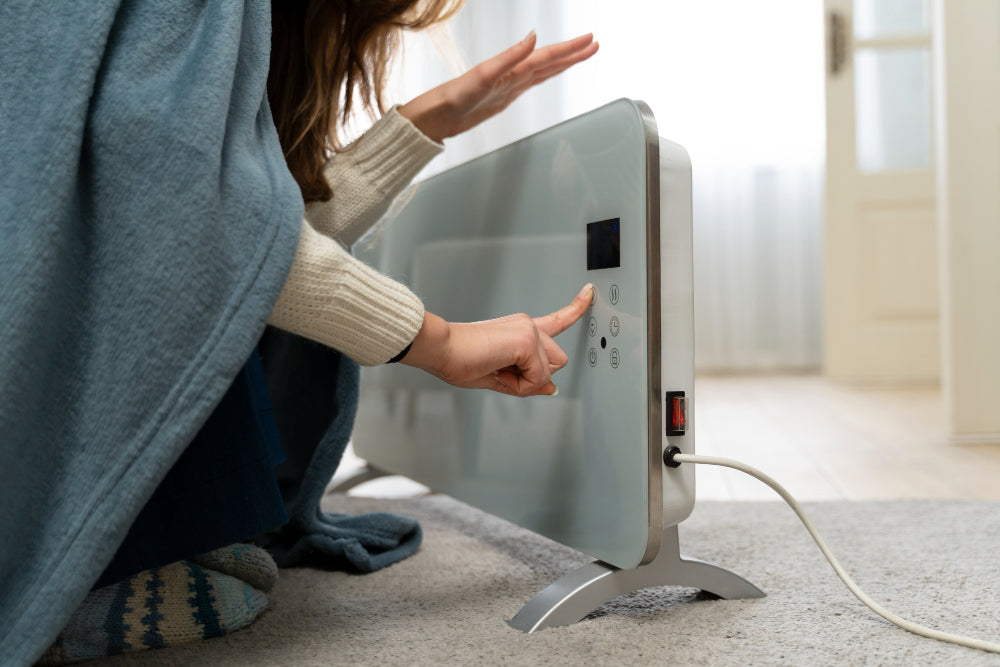When there is a cold season or winter, no one wants a heater that is not in good working order. However, it is not convenient to buy a new heater. That is why we have created this troubleshooting guide to assist you in finding the cause of the problem in your heater and fixing it as soon as possible.
Reasons Your Heater is Not Working
There are many reasons that can cause a heater to malfunction, including:
- Thermostat issues: The thermostat can be the cause of the problem if it is damaged or not configured in the correct mode. Also, check the thermostat batteries and replace them if they are dead.
- Dirty air filter: In simplest terms, a dirty filter restricts the airflow that gas heaters require, causing them to switch off. It can also cause overheating and unusual smells.
- Pilot light issues: If the pilot does not light or is blown off immediately, there may be a problem with the venting or fuel transmission.
- Blocked vents: Your heater will become ineffective if they are closed or blocked.
Tips to Locate and Fix the Problem in Your Heater
Regardless of how well the heater has been installed, it can develop problems at the most improper times. Fortunately, not all issues affecting a heating system require the input of a professional technician.
1. Check if the Thermostat is Working
It looks very basic, but often, people are shocked to discover that their thermostat caused the issue. In some models, if you have dead or weak batteries in the unit, your system could act up or not respond at all. Your thermostat may also be without power due to a blown circuit breaker.
2. Check the Thermostat Settings
It is possible that a family member has inadvertently altered the settings, or the thermostat may have experienced a reset due to a malfunction. Most modern thermostats typically offer two primary setting options:
Auto
This option instructs your system to heat the air and operate the fan whenever the temperature in your home falls below the level set on the thermostat. Using the “auto” setting can help maximise your energy savings.
On
This option keeps your system’s fan running continuously, regardless of whether your heater produces warm air. If you notice your system operating but receiving cold air from your vents, it’s likely set to “on.”
3. Change the Air Filter
When did you replace your heater’s air filters last time? The frequency of changing the filters depends on how frequently your heater is being used: the more often you use it, the sooner the filter will need replacing.
Dirty air filters can cause various problems, including reduced airflow, decreased heating, and potential equipment failure. If the components of your heater overheat, the system may have a built-in automatic shut-off feature that shuts down the equipment to prevent permanent damage.
4. Check the Circuit Breakers
Some depend on electricity even if their heating system runs on gas or oil. First and foremost, check your house’s distribution boxes for any tripped circuit breakers. If you use a heat pump, there will typically be separate circuit breakers for the outdoor and indoor units. If any of these switches are off, turn them back on.
5. Check the ON/OFF Switch
Regardless of where your furnace is located—whether in a utility closet or the attic—there should be a switch that looks like the standard light switch. This switch is typically labelled, and your furnace will not run if it is off. If it’s off, turn on the heating system.
Similarly, for a heat pump, the ON/OFF switch is usually found on the exterior wall of your home. Ensure this switch is in the ON position. You may need to lift a small metal cover to access the switch inside a protective box.
6. Check the Furnace Door
Many furnaces have sensitive safety mechanisms to ensure their safe operation and protect the equipment. Properly opening and securely closing the furnace door is crucial. In particular, some furnace models are engineered to stop working in case the door is not properly closed.
This feature is a critical safety measure to prevent any potential hazards from improper closure. Therefore, always double-check that the door is fully latched and in place before starting the furnace to ensure optimal performance and safety.
7. Examine the Gas Valve Next to Your Heater
If you have a gas-powered heater, it’s possible that someone in your home turned off the gas after the last heating season or that an HVAC technician did so while servicing your system.
The gas valve’s ON/OFF lever should be aligned with the gas pipe when open. If the valve is closed, the lever is perpendicular to the pipe, creating a cross shape. Rotate the lever to align it with the pipe and restore the gas supply to your heater.
8. Clear Any Obstructions in the Ductwork
Blockages in the duct system can hinder proper airflow and lead to inconsistent heating. Contact professional electricians and gas heater service experts to evaluate your ductwork for clogs and remove any obstacles to guarantee adequate airflow and uniform heat distribution in your home.
Is Your Heater Still Not Working? Contact Professional
If all else fails, you can contact our skilled technicians to detect and resolve the problems before they escalate into larger issues. Furthermore, arrange yearly heating service and maintenance appointments to guarantee the optimal performance of your heater.

